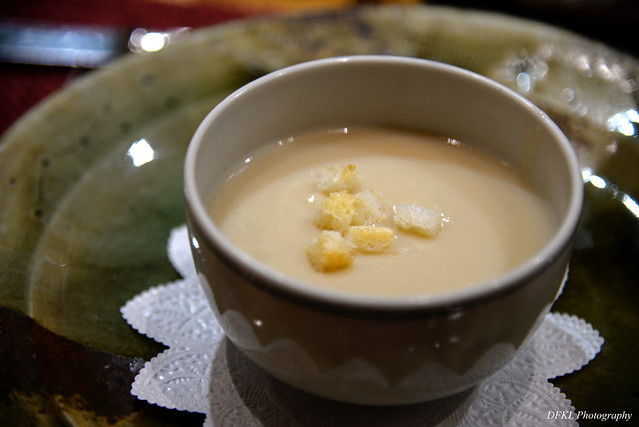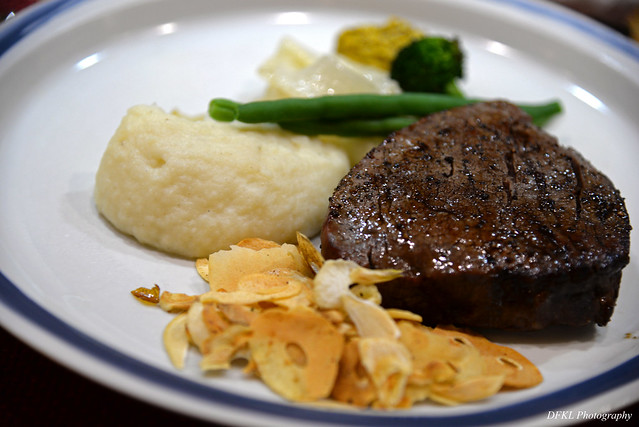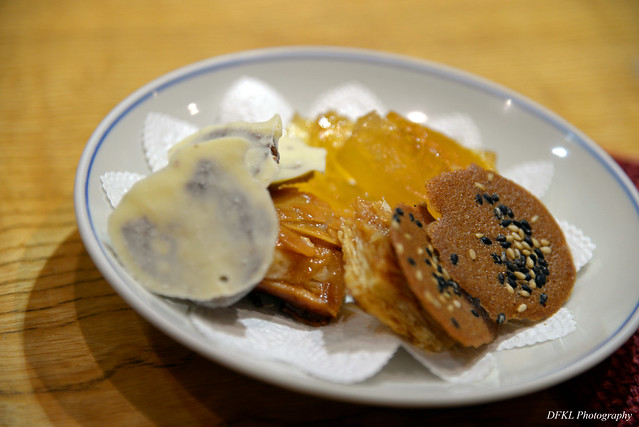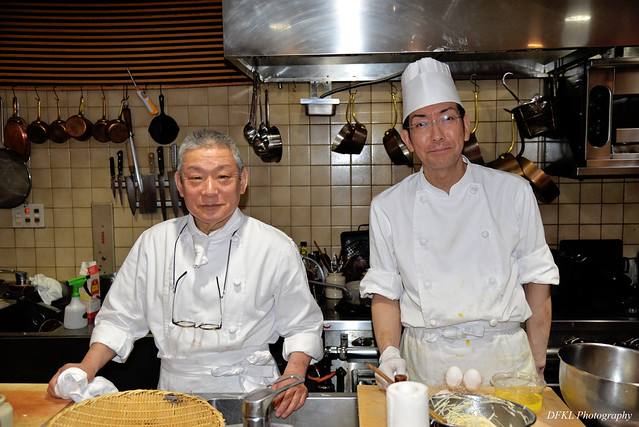November 29, 2017
When my friend mentioned wagyu was her no. 1 priority on this trip, my suggestion was to try it in two different formats — steak and sukiyaki. For the former we would be going to Shima, one of Tokyo’s more famous steakhouses that actually welcomes non-regulars. It is difficult to find even when I had my Google map ready and numerous cap screens of its discreet sign, and only after a few detours that I finally was able to located the humble-looking restaurant hidden in the basement of an office building. Shima doesn’t look like your typical steakhouse; if not for the few white-tablecloth tables at the back I would have thought I have walked into an izakaya.
We were seated at the counter seats in front of the open kitchen. Chef Oshima Manabu worked for a stint in England before opening Shima; his willingness to engage with foreigners is one of the key reasons why his restaurant has caught on with visitors. While we were studying the simple menu, Oshima was puzzled by the choice of the lady next to us, who broke her hand the previous night but would be flying home to San Francisco.
“Why don’t you go to the hospital? You should fix your hand instead of coming here.”
Before we got to order, a bunch of young Spanish speaking tourists marched in and dropped off some confectionery for Oshima. The previously silent dining room soon turned rowdy like how a bunch of college students crashed their parents’ wine tasting gathering. Like many others have noted, Chef Oshima’s hospitality is part of the charm of eating at Shima.

We ordered some appetizers and a steak each. The white asparagus was very sweet and soft, but I found the bits of cold egg distracting.

Cream of radish was something I had never tried before. It tasted surprisingly light, with a hint of bitterness from the white root.

Now came the main event. Shima offers two cuts — filet or sirloin — and we ordered both in pairs to share.
Wagyu is graded from A to C class for amount of meat yielded and 1 – 5 in terms of the quality of marbled fat (5 being highest). Shima’s wagyu is from Kyoto and Oshima prefers A-4 as he believes A-5 is too fat to be served as steak. The beef is aged for ten days in fridge as dry-aging is generally deemed unnecessary for wagyu.
The meat, with some rubbing of salt and pepper, was roasted rotisserie-style in a charcoal oven over 220°C for 20 minutes. After a few seconds of sealing on a flattop grill, they were served on room temperature plates without any resting. This whole process ran completely counter to what I thought I knew about preparing a steak — Oshima’s preparation is clearly aimed to be as unobtrusive as possible to allow the quality of the meat to speak for itself.
As could be expected, both cuts were extremely tender and juicy, the texture almost resembling pastry more than beef. The filet was a little leaner while the sirloin packed slightly more meatiness, but this was only relative as wagyu doesn’t offer much natural flavour besides its butter-like fattiness. I am not sure wagyu can be turned into a great steak, at least one that fits my preference since I look for flavour in my steak first and foremost. Even though Sumi 2008 isn’t exactly a steak, I think that is the right approach to bring out wagyu’s inherent sweetness with compatible seasoning.
The side vegetables were fresh and sweet. The mash potato could be creamier.

While we were munching on the petit fours, I took a moment to take in what’s around me. Shima is very much a relic of a bygone era, its decor and cooking very much reflecting the 1980s or at least what my imagination of that decade feels like. This isn’t a knock — I admire how Oshima has managed to chug along and stay as relevant as ever in 2017. The cooking, while old-school, is meticulous. I particularly enjoy watching him at work in the open kitchen, fluid in every movement like a sushi or tempura chef.
But to pay ¥13,000 for 400g of steak or ¥18,000 per person for the final bill is a bit rich, even though I know wagyu is right up there in the ranking of luxurious ingredients. My feeling has always been wagyu is best consumed in Japanese style such as sukiyaki; my experience at Shima failed to change my opinion one bit. Perhaps I shouldn’t form a final judgment before having Shima’s signature ¥6,000 takeaway steak sandwich, yet the thought of more beef after a steak lunch with a hefty dinner coming up wasn’t too appealing.
Pro tip: Go to Shima right before your flight home so you can eat the sandwich onboard while your fellow passengers suffer through their horrendous plane food.
Deliciousness: 6.5/10
Value: 3/10
Recommendation: 6.5/10
Address: 3-5-12 Nihonbashi, Chuo, Tokyo
Opening hours: 12:00 – 13:00, 18:00 – 21:00; Monday – Saturday

I liked shima. Awesome place.